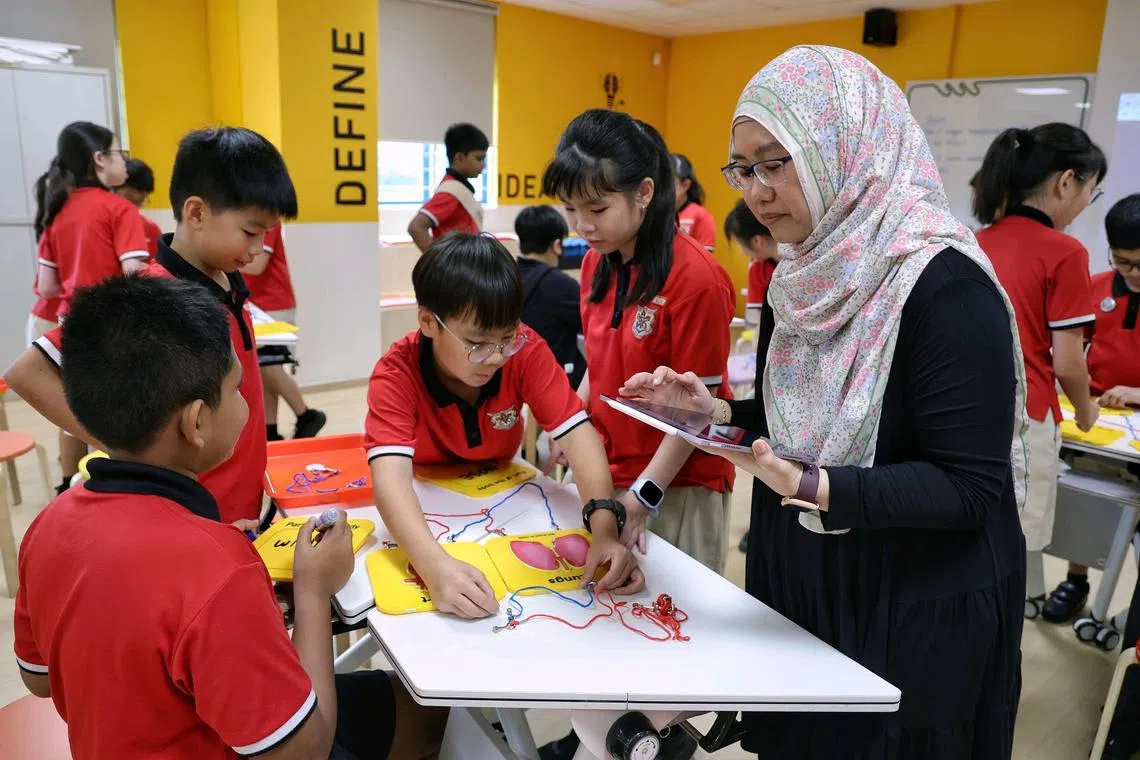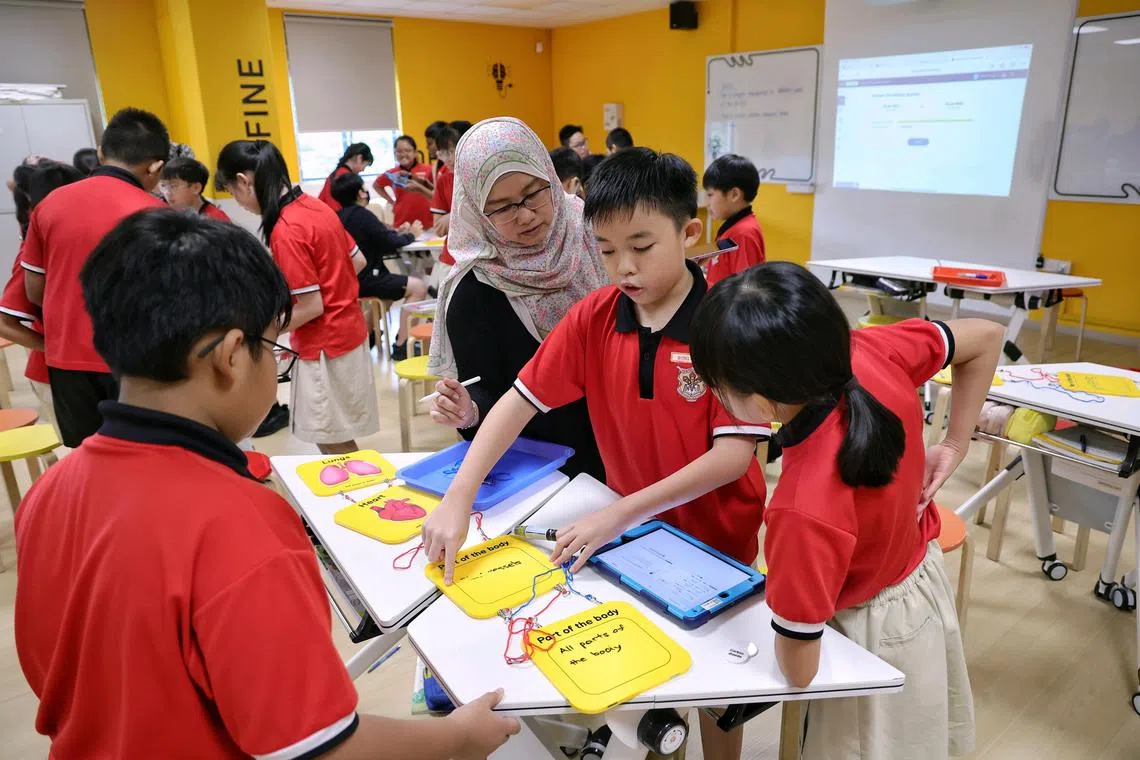Primary school science lessons Sparkle with refreshed syllabus and new resource kits
Sign up now: Get tips on how to help your child succeed

Primary 5 pupil Freya Edenette Moniaga (left) taking a photo of the group work to post on the Singapore Student Learning Space online platform during science class in Yew Tee Primary School on July 22.
ST PHOTO: KEVIN LIM
Follow topic:
- Sparkle kits enhance science lessons with hands-on activities, using resources like games and LED bulbs to engage students and improve understanding.
- Teachers at Yew Tee Primary coordinate kit access, tailoring tasks to different learning abilities, offering simpler or more complex activities within lessons.
- Pupils find hands-on learning more engaging than paperwork; and visualising activities aids memory, helping them tackle similar questions effectively.
AI generated
SINGAPORE - Stepping into Madam Nurhida Sapiie’s science lesson at Yew Tee Primary School, it is a flurry of activity.
Seated in groups, her pupils are discussing how to complete a task she has given, experimenting with materials from a kit to replicate the human circulatory system.
Some are on their feet with iPads, capturing images of their group’s handiwork to upload on the Singapore Student Learning Space (SLS) – an online platform.
Others are trying to persuade their group mates that there is something amiss with the way they have connected the panels representing the heart, lungs and other parts of the body using the red and blue strings, which represent the blood vessels.
The interactive and hands-on nature of Madam Nurhida’s lesson is made possible with a kit created by the Ministry of Education (MOE), the National Institute of Education, and Science Centre Singapore.
Sparkle – short for Science Pack Activity Resource Kits for Learning – was introduced in 2023 starting with the Primary 3 cohort, along with the science curriculum refresh.
The final kits for the Primary 6 science syllabus will be adopted in 2026.
Science lessons today are vastly different from her own experience in primary school, said Madam Nurhida. “I remember just sitting and looking at my teacher at the front. There was not much opportunity for us to conduct experiments until we entered secondary school.”
Designed to complement textbooks, activity books, and SLS materials, Sparkle comprises 19 kits covering 18 topics from Primary 3 to 6, such as light, heat and living things. Each school receives 23 sets of each kit.
Each kit is stocked differently. For example, the “living things” kit contains a game placemat and playing cards for pupils to learn about the characteristics of plants, animals, bacteria and fungi.
The kit on light comprises a collapsible box, LED bulbs and batteries for pupils to experiment with shadow formation and the properties of light.
At Yew Tee Primary, teachers coordinate lesson schedules across classes to ensure all pupils have access to the kits as they begin each new topic.
In the past, Madam Nurhida said she would need to spend time planning and thinking about extra activities and materials she could use – apart from the textbook and activity book – to make lessons more engaging.
One of her challenges was ensuring materials like online videos were aligned with the MOE science syllabus.
Madam Nurhida said the extra resources help students better understand scientific concepts.
With these set of resources, teachers can focus on selecting what they need from the Sparkle kits, instead of creating or looking for materials from scratch, she said.

Science teacher Nurhida Sapiie (right) observing the use of the Science Pack Activity Resource Kits for Learning (Sparkle) hands-on kits during science class in Yew Tee Primary School on July 22.
ST PHOTO: KEVIN LIM
She added that the resources are designed in a way to cater to pupils with different learning abilities. Those who grasp concepts faster can be given more demanding tasks to do while others who need more time can do something easier.
For example, during her lesson, some groups had the option to use four panels and both the red and blue strings to construct the model of the circulatory system, while others opted to use three panels and strings of the same colour to make it easier.
Primary 5 pupil Wong Zi Yuan, 11, said the Sparkle kits make lessons more fun and engaging.

Madam Nurhida Sapiie said the extra resources help students better understand scientific concepts.
ST PHOTO: KEVIN LIM
“Instead of just paperwork, which I think is kind of boring, we get to do hands-on activities and work together with our classmates,” he said, adding that exchanging ideas with his peers help them find the best solutions.
Lessons with hands-on projects help him with remembering concepts and information during examinations, he said.
Said Zi Yuan: “If I come across similar questions, then I’m able to picture it in my mind, because I’ve seen it once before. So it will help me remember more stuff.”


